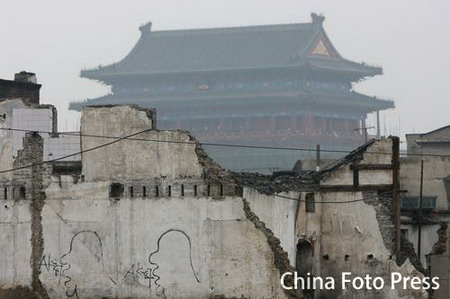“Instead of specific memories, the associations the Generic City mobilizes are general memories, memories of memories: if not all memories at the same time, then at least an abstract, token memory, a déjà vu that never ends, generic memory.”
Koolhaas S M L XL, 1257
Cities play an important role in every urban dweller’s memory. And urban architecture and landscape act as background or even identify our memory. The clear identity of a city strongly influences the memories that contribute to city’s image. Koolhaas uses the metaphor of lighthouse to describe this “identity”—“fixed, over determined: it can change its position or the pattern it emits only at the cost of destabilizing navigation” (Koolhaas, 1248). While after the spread of Neoliberalism and globalization, there are more and more cities from Global South countries tend to become “the Generic Cities”, where both urban landscape and people’s lifestyle move from difference towards similarity, which will finally lead to “memories of memories”(Koolhaas, 1257), the fading of city’s memory.
Beijing, as the city with imperial capital historical districts as well as new developing area, carries complex memories of more than 20 million local residences and migrant workers: old courtyard houses with gardens, vendors selling with verbal advertisement along old alleys, etc. However, these identical memories of Beijing are threatened by building booms towards to a Generic City. After Beijing won the bid for 2008 Olympic games, it’s interesting to see how these new monument building and avant-garde architecture are all from foreign architects whose practices locate in all parts of the world with the trend of Generic City. The conflict between identity city of Beijing and the newly built Metropolis filled with western avant-garde architecture corresponds with the one between general public and emerging economic elite in China. It is because of limited urban space and government’s ambition of rebranding city’s name in the world that Olympic facilities are built on the ashes of old neighborhood, and that eventually turning into “exclusive benefit of China’s emerging elite”. (Broudehoux, 91)
It’s ironic to see how deliriously Beijing is, sacrificing a cohesive and identical memory for most Beijingers, and reconstructing those “abstract token memory” with randomly placed “megalomaniacal architectural objects” that will only lead to a generic memory of a modern metropolis (Broudehoux, 101). However, we have to admit that people do simply enjoy their invention of this Generic City. The examples of protests that Broudehoux provides in the article are still limited to only very minority of people. Most Beijingers, in reality, even become millionaires, who we call “new elite”, by trading their authorities of identical memory with urgent and ambitious governors and developers in order to get the benefit like infrastructure of the new Generic City, which they consider as modern and better life.

Broudehoux, Anne-Marie. Delirious Beijing: Euphoria and Despair in the Olympic Metropolis
Koolhaas, Rem; Mau, Bruce. SMLXL. Generic City
http://news.sina.com.cn/c/p/2007-01-19/154612084451.shtml